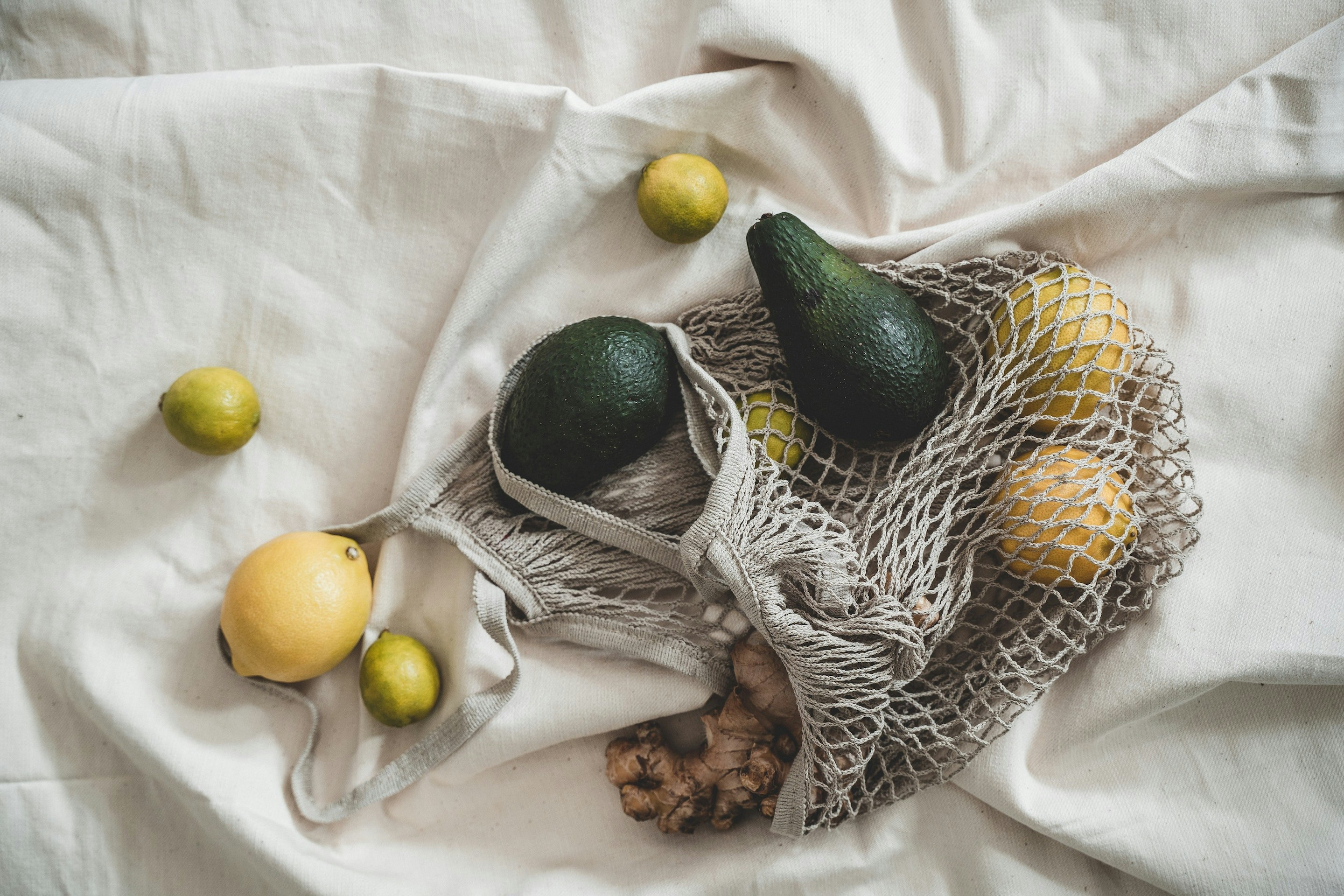In general, an avocado is ripe when the top of it has some give. However, not all avocado varieties are the same.
When you're on the hunt for the ideal avocado, there are a couple of key things to keep in mind. It's important to know the various types of avocados and when they're in season. Having this knowledge will enable you to make a wise choice and select a ripe avocado that's perfect to eat.
Whether you're whipping up an avocado smoothie, guacamole, or sprucing up your salad with some avocado goodness, it's absolutely crucial to choose an avocado that's just right. This way, you'll be able to create a mouth-watering and satisfying dish that will leave you wanting more.
Before getting to how to pick that perfect avocado, we’ll give you the necessary info to make an informed choice.
Different Avocado Varieties
Believe it or not, there are over 500 different kinds of avocados. They can be grouped into Mexican, Guatemalan, and Indian varieties. The avocados you see at the grocery store are just the tip of the iceberg, and they don't all look or taste the same (but none of them are juiceable!)
Keep reading to find out about some of the most popular types of avocados, so you'll be able to identify them and determine when they're ripe.
1. Hass Avocado
The Hass avocado is super popular and easy to find. It has a dark green, bumpy skin that gets a purplish-black color when it's ready to eat. The inside is smooth and creamy with a nutty taste, and it's got a lot of oil in it. People love using Hass avocados for guacamole because they add a rich flavor.
2. Fuerte Avocado
Fuerte avocados are known for their thin, smooth and vibrant green skin, which does not change color when they ripen. The flesh inside is thick, creamy yellow, and has a slightly oily texture. These avocados have an elongated pear shape and are usually bigger than Hass avocados. They also have a more mild flavor. Fuerte avocados were among the first avocados grown for commercial purposes and remain popular today.
3. Reed Avocado
Reed avocados are bigger than Hass avocados and they have a more rounded shape. On average, Reeds can weigh anywhere from one to two pounds. When you cut them open, you'll find delicate, light green to yellow flesh with a skin that's a bit tough to peel. The skin itself is smooth and green, and it stays green even when the avocado is fully ripe. Reed avocados have a creamy texture and a slightly sweet, buttery taste.
4. Bacon Avocado
In 1954, the Bacon Avocado was created by crossbreeding two types of avocados from Mexico. It got its name from the person who first grew it, James Bacon. This avocado has become quite popular because it can withstand colder temperatures compared to other types.
According to the California Avocado Commission, when Bacon avocados are ripe, their thin green skin will darken slightly; more significantly, their flesh will give very easily under gentle pressure.It has a creamy texture and a mild taste, which makes it a perfect addition to dishes with strong flavors. It can also be used as a thickener in keto-friendly recipes like avocado chocolate mousse and avocado mayo.
5. Pinkerton Avocado
Pinkerton avocados are known for their thin, vibrant green, slightly pebbly skin that turns a deeper green as it ripens. These avocados can range in size from as small as 8 ounces to as big as 18 ounces. They have a delicious, nutty flavor that is characteristic of avocados, and the pit is very small, which means you get more avocado flesh to savor.
There are so many different kinds of avocados out there, and these are just a few examples. Each one has its own special taste, feel, and telltale signs of ripeness. Keep in mind that the specific kinds you can find might depend on where you live and the time of year.
How to Pick a Ripe Avocado
When picking a ripe avocado, there are a few factors to consider. Here's a step-by-step guide to help you choose a ripe avocado:
1. Check the color: Avocado colors can differ depending on the type, but typically, a ripe avocado will be dark green or nearly black. However, certain varieties, such as the Hass avocado, might have a rough, dark skin even when not ripe. The trick is to check for consistent coloring and steer clear of avocados with big patches of light green or yellow.
2. Firmness of the avocado: When it comes to determining if an avocado is ripe, color can be helpful, but the best way to be sure is by giving it a gentle squeeze in your hand, or using your thumb to press the top of it gently to check for some give. Avoid poking it with your fingers; instead, hold it in your palm and apply gentle pressure. If it gives slightly, it's ripe and ready to eat. If it doesn't yield, it might need a few more days to ripen. A ripe avocado should be firm but give in to gentle pressure. If it feels too mushy or soft, it's probably overripe, and if it feels hard, it's likely not quite ripe yet.
3. Check the stem area: You can learn a lot about an avocado by looking at its stem. Instead of pressing on the sides and risking bruising it, try pressing the area near the stem. If it leaves a dent, then it's probably too ripe. But if it caves in slightly and still holds its shape, then it's just the right amount of ripeness.
Another way to check if the avocado is ripe is by trying to flick off the stem. If it doesn't come off easily, then it's not yet ripe. But if it comes off too easily, and you see brown flesh underneath, then it's overripe. Just keep in mind that once the stem is removed, air can get inside the avocado, which might cause it to turn brown. If you find it on the shelf without a stem, you’ll know that somebody else tested the ripeness by removing it, and it might have started spoiling.
4. Assess the weight: When picking an avocado, it's important to go for one that feels weighty. If it feels oddly light, it could mean that the avocado is either dried out or not yet ripe.
5. Bruising: If you spot any big bruises, skin breaks, or squishy spots on the avocado, it's best to pass on buying it. Additionally, the skin shouldn't feel too stiff or woody. If it is, chances are it's too ripe, and you'll probably have to throw it away once you cut it open.
6. Consider the time factor: If you're in need of an avocado right away, opt for one that feels a bit softer to make sure it's ready to be enjoyed. But if you're thinking of using it in a few days, go for a slightly firmer avocado, so it can ripen at home.
It's important to keep in mind that avocados ripen at different speeds. So, if you come across avocados at various stages of ripeness, you can choose a mix to enjoy over time.
Just a friendly reminder, avocados can turn too ripe pretty quickly. So, make sure to check them regularly and consume them promptly once they reach your desired level of ripeness, or pop them in the fridge if you need more time.
How to Ripen an Avocado Quickly
Here's a cool trick you can try if you want your avocado to ripen faster. Just grab a brown paper bag and toss in a ripe apple along with the avocado. Leave the bag at room temperature and let the magic happen. If you don't want them to ripen as quickly, you can also simply set an apple or banana next to your avocados as well.
You see, both the apple and the avocado release a gas called ethylene as they ripen. By trapping that gas from the apple in the bag, the avocado gets a boost and ripens quicker. Usually, you'll have perfectly ripe avocados in about 1–2 days. And guess what? This trick works with other fruits too! Ripe bananas, kiwis, apricots, and mangoes also give off ethylene gas, so you can use the same method with them. How cool is that?
How to Prevent a Ripe Avocado from Spoiling
If you want to slow down the ripening of an avocado, just pop it in the fridge, whole and uncut. The cold temperature will help to slow down the ripening process, but keep in mind not to store it near other fruits and veggies that might be affected by ethylene gas.
Leafy greens, herbs like romaine, iceberg, spinach, and parsley, as well as veggies like squash, cauliflower, and eggplant can turn brown and wilt if stored alongside avocados. To keep everything fresh, use the drawers in your fridge to keep these two groups of produce separate.
How to Stop a Cut Avocado From Turning Brown
When you cut open a nice green avocado, it's a bummer to see it turn brown, right? But don't worry, there are a few tricks to prevent that from happening. First, if you only use one half of the avocado, keep the pit in the other half. This will protect some of the exposed flesh from turning color.
Another option is to squeeze some lemon juice on the avocado and wrap it tightly in plastic wrap. The acid in the lemon will help prevent browning. You can also try using a bit of olive oil as a barrier between the avocado and the air.
Are Avocados Seasonal?
Avocados do follow a general pattern of being more available during certain times of the year, but this can differ depending on where you are and what time of year it is. Typically, there are two main seasons for avocados: a primary season and a secondary season.
Primary Season
Avocados are at their best during the spring and summer months, which is their primary season. This is when you'll find a wide range of avocados in abundance, with popular varieties like Hass, Fuerte, and Reed being readily available. They are delicious and packed with flavor during this time.
Secondary Season
Did you know that avocados have a secondary season during the fall and winter months? Although the variety may not be as extensive as the primary season, you can still get your hands on some avocados during this time. In fact, certain types, like the Bacon avocado, may be more readily available during the secondary season. So, don't worry, you can still enjoy the deliciousness of avocados throughout the year!
Just so you know, avocados are grown in various parts of the world, and their availability can differ depending on the location. In certain regions, you can find avocados all year round because the climate there is great for continuous cultivation.
Moreover, thanks to advanced farming techniques like greenhouse cultivation and international trade, avocados are now accessible all year round, regardless of their traditional seasons. However, it's important to note that the variety and quality of avocados may vary depending on the time of year.
If you want to enjoy the most flavorful avocados, it's still a good idea to consider their seasonal availability and opt for locally sourced ones whenever possible.
Conclusion
In conclusion, picking a ripe avocado may seem like a daunting task, but with these tips, it can become a breeze. Remember to look for the signs of ripeness such as the color and texture of the skin, and gently squeeze the fruit to feel for firmness. Additionally, knowing how to slow down and speed up the ripening process can ensure that you always have perfectly ripe avocados when you want them.



Comment